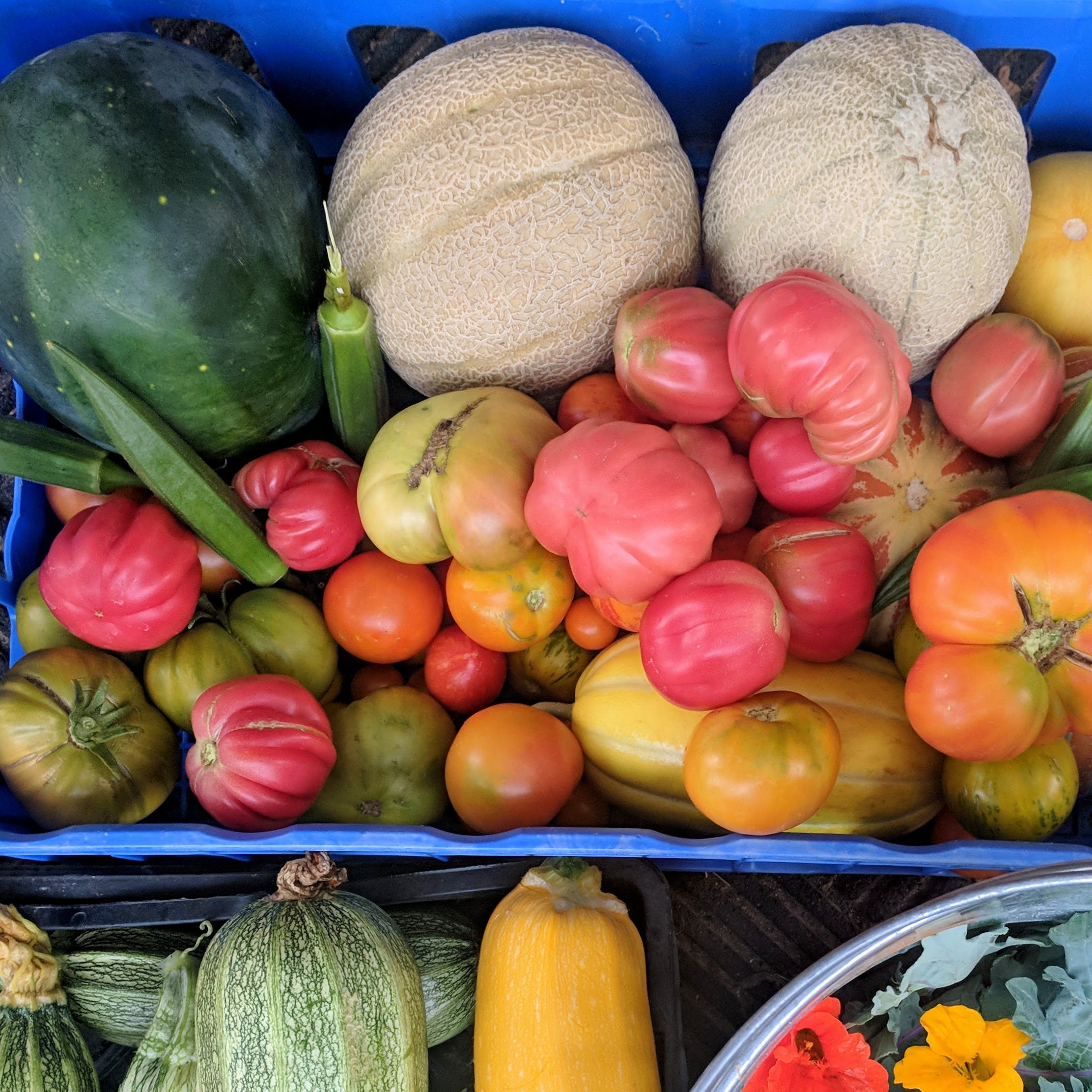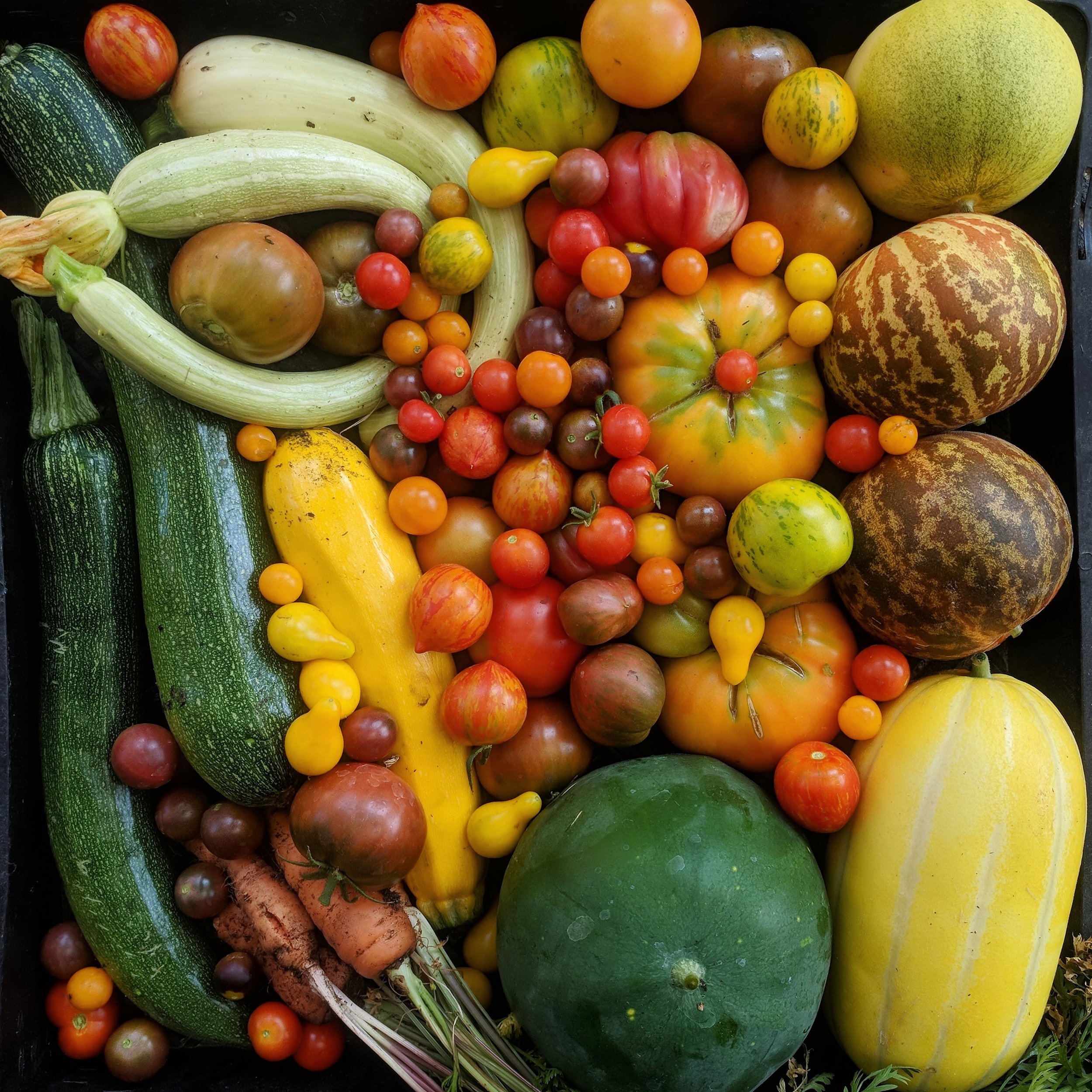Unique Melons to Spice Up Your California Garden This Summer
California's warm summers and diverse climates are a melon grower's paradise. While classic cantaloupes and watermelons are always delicious, why not venture into the world of heirloom and unusual melons? These varieties offer a burst of sweetness, unique textures, and stunning colors that will transform your summer snacking.
Kajari Melon
This Indian heirloom is a sweet surprise. With its striped orange, green and white rind and exceptionally sweet, honeydew-like flesh, it's perfect for snacking or salads.
Days to Fruit: 60-70 days from seed
Size: 2-3 pounds
California Growing Tips: Start seeds indoors 4 weeks before planting outdoors. Prefers warm temperatures, so wait until night soil temperatures consistently reach 60°F (15°C). Space plants 3-4 feet apart on a trellis or provide support for vining growth. Regular watering is essential, especially during flowering and fruiting. Mulch around plants to retain moisture and suppress weeds.
Taste Profile: Exceptionally sweet, with a juicy, honeydew-like flavor and a hint of floral aroma.
Ashkabad Melon
An Uzbek treasure boasting a beautiful yellow rind with a refreshingly sweet, juicy flavor reminiscent of honeydew with a hint of pear.
Days to Fruit: 80-90 days from seed
Size: Fruits can vary in size from 8-10 pounds.
California Growing Tips: This variety prefers hot weather, so ensure night soil temperatures are consistently above 60°F (15°C) before transplanting. Space plants 5-6 feet apart on a sturdy trellis, as Ashkabad melons are vigorous growers. Mulch heavily to retain moisture and suppress weeds. Consistent watering is crucial, especially during hot spells.
Taste Profile: The flesh is very sweet and juicy, with a refreshing honeydew flavor. Some describe a subtle melon-pear aftertaste.
Moon and Stars Watermelon
This striking heirloom will be the star of your garden! Its dark green skin speckled with yellow "stars" reveals a vibrant crimson flesh packed with classic watermelon sweetness.
Days to Fruit: 85-95 days from seed
Size: Watermelons typically range from 10-20 pounds, although smaller personal-sized varieties are available.
California Growing Tips: Watermelons thrive in hot weather, so wait until night soil temperatures are consistently above 70°F (21°C) before planting. Seeds can be directly sown outdoors or started indoors for a head start. Watermelons are sprawling vines, so provide ample space (6-8 feet apart) and consider using a low trellis for support. Consistent watering is essential, especially during fruiting, but avoid waterlogging the soil.
Taste Profile: The flesh is very sweet and juicy, with a classic watermelon flavor. Some varieties boast a hint of citrus or honeydew sweetness.
Japanese Tiger Melon
As visually stunning as it is delicious! The pocket-sized melon sports a bright green rind with yellow stripes and boasts a sweet honeydew flavor with a touch of citrus.
Days to Fruit: 75-85 days from seed
Size: Fruits can vary in size from 10-12 ounces.
California Growing Tips: Similar to other melons on this list, start seeds indoors for a head start and transplant when night soil temperatures reach at least 60°F (15°C). Space plants 4-5 feet apart on a sturdy trellis, as Japanese tiger melons are vigorous growers. Water regularly, especially during fruiting, but avoid waterlogging.
Taste Profile: The flesh is very sweet and juicy, with a refreshing honeydew flavor and a hint of citrus or cantaloupe.
Melon Growing Essentials for California
Warmth Lovers: Melons crave warm weather. Don't plant seeds outdoors until night soil temperatures are consistently above 60°F (15°C) and ideally closer to 70°F (21°C) for robust growth.
Seed Starting Savvy: For a head start in cooler regions or a longer harvest season, consider starting seeds indoors 3-4 weeks before the last frost date. Use individual peat pots or biodegradable containers to minimize root disturbance, as melons generally dislike transplanting.
Direct Seeding vs. Transplants: While some gardeners have success transplanting melons, it's generally recommended to direct sow seeds outdoors when soil temperatures are warm enough. Melons have a taproot system that can be easily damaged during transplanting, potentially hindering growth and fruit production.
Feeding Melons for Success: Melons are heavy feeders. Amend your planting bed with plenty of aged compost or well-rotted manure before planting. Once vines begin flowering and setting fruit, you can sidedress with a balanced organic fertilizer following package instructions. Avoid excess nitrogen, which can promote excessive foliage growth at the expense of fruit production.
Watering Wisely: Consistent watering is crucial for melons, especially during flowering and fruit development. Deep watering encourages deep root growth, making plants more resilient to heat and drought. Aim to water thoroughly every few days, allowing the top inch of soil to dry slightly between waterings. Avoid shallow watering, which encourages surface roots and makes plants more susceptible to fluctuations in soil moisture. Mornings are the best time to water, allowing foliage to dry throughout the day to reduce the risk of fungal diseases.
Remember, these are general guidelines, and you may need to adjust your watering frequency based on your specific climate and soil conditions.
Expand your melon horizons this summer with these unique and delicious varieties. With sunshine, careful watering, and a touch of California know-how, your garden will become a sweet oasis.











